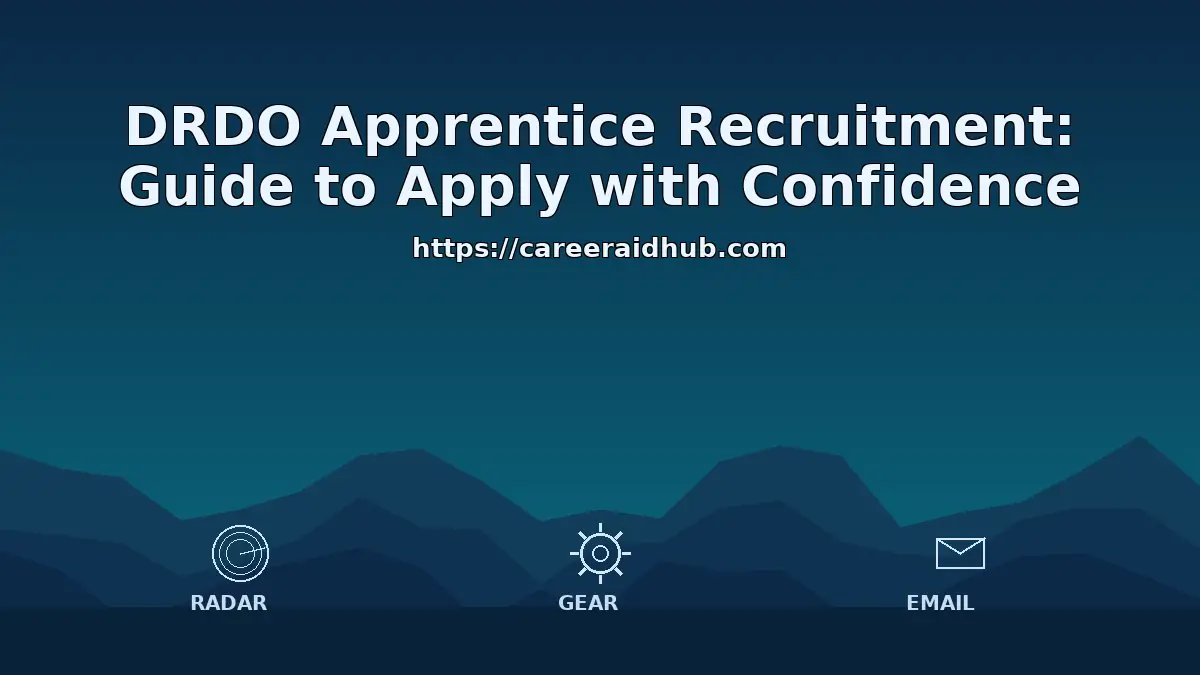Introduction: Why the NCBS Winter Internship is worth your effort
The National Centre for Biological Sciences (NCBS)—a campus of the Tata Institute of Fundamental Research in Bengaluru—hosts an interdisciplinary research ecosystem spanning molecular biology, neurobiology, ecology and evolution, structural biology, and computational approaches. Winter cohorts emphasize short, outcome-driven modules that deepen techniques, professional habits, and scientific judgment. Because calls can open and close quickly, applicants who prepare documents in advance and target the right laboratories consistently perform better. For authoritative announcements and eligibility specifics, consult the official NCBS website before applying.
Planning a focused winter research stint in India? The NCBS Winter Internship places motivated students in high-performing labs for hands-on projects, rapid skill-building, and credible outputs. Prepare early, match your methods to a host lab, and submit a precise, compliant dossier through official channels to strengthen your scientific trajectory.
Program snapshot (what candidates can generally expect)
Although each call publishes final terms, most NCBS winter internship rounds tend to share a common structure and expectations.
Format and timeframe
- Mode: Full-time, on-campus research placement anchored by a host lab
- Typical duration: Approximately 8–10 weeks,
aligned with academic winter breaks - Daily rhythm: Bench or computational work, regular group meetings, and mentor check-ins
Learning design and mentorship
- Focus: A tangible, scoped module—experimental or computational—contributing to an existing project
- Mentorship: Close supervision from a principal investigator or senior lab member, with access to lab meetings and journal clubs
- Outcomes: A succinct report, lab talk or poster, and demonstrable skills transferable to future work
Practical note: Stipend availability, accommodation, and campus logistics vary by round and capacity. Treat the current call text as the definitive guide and align your plans accordingly.
Who should apply: eligibility and ideal profile
Eligibility:
- Undergraduate final-year and penultimate-year students in life sciences or allied fields (biotechnology, biochemistry, bioengineering, ecology/evolution, computational biology, or physics/chemistry with a biological focus)
- In some cycles, early master’s or integrated PhD students may also be considered as specified
What a competitive profile looks like
- Domain fundamentals: Cell biology, genetics, statistics, and basic scientific writing
- Method readiness: Course-based lab experience or coding practice (e.g., Python/R, image analysis, sequence workflows)
- Evidence of execution: Mini-projects, posters, or repositories that prove you can plan and finish tasks
- Professional habits: Safety-first thinking, disciplined documentation, and proactive communication
style="text-align: justify;">
How to choose a host lab (and avoid mismatches)1) Map your skills to lab methods
List what you can reliably do—pipetting, PCR, cloning, culture, microscopy, R/Python, ImageJ, BLAST, sequence analysis, or field sampling. Then shortlist labs whose methods overlap your competencies. That way, you can contribute from week one rather than spending the entire period in training.
2) Read 3–5 recent outputs
Scan recent publications, preprints, or seminar abstracts from your shortlisted groups. Note the biological system, the main question, and the bottleneck methods. If your strengths map onto a bottleneck—say, image segmentation or primer design—highlight that alignment directly in your application.
3) Align scope to the calendar
In 8–10 weeks, a credible goal might be “optimize two primer sets and test three conditions,” or “replicate a baseline model and implement one performance improvement.” Propose a plan you can finish cleanly, with room for troubleshooting.
Application components: what to prepare and how to polish
CV (two pages, scannable and consistent)
- Education details with current GPA/percentage and key coursework
- Skills grouped by wet-lab (PCR, cloning, culture, microscopy) and dry-lab
(Python/R, NumPy, Pandas, ImageJ, BLAST) - Mini-projects, posters, code repositories (include links)
- Relevant certifications (biosafety, animal ethics, research data management)
Statement of purpose (600–800 words, structured)
Organize into four compact paragraphs:
- Motivation: Why this theme matters now and how it connects to your training
- Fit: Two clear overlaps between your skills and the lab’s methods or bottlenecks
- Plan: A time-boxed mini-project with tasks, milestones, expected figures, and a minimal deliverable
- Trajectory: How you will convert the internship into future outputs (thesis, fellowship, or graduate school)
Evidence pack (concise and verifiable)
- Unofficial transcripts or mark sheets
- One to two references or contact details if requested in the call
- A short portfolio: a figure, a code snippet, or a single-page methods summary
Formatting tips: Export PDF only, maintain uniform headers with your name and contact details, and use descriptive filenames such as Surname_NCBS_Winter_CV.pdf. Respect file-size limits and ensure scans remain readable.
Step-by-step application plan (so you don’t miss the window)
1) Monitor the official call
Bookmark the NCBS site and note the
last date as soon as it appears. Create calendar alerts to trigger reminders two weeks, one week, and two days before the deadline.
2) Shortlist two to three host labs
Study group pages and recent outputs. For each target lab, write a 2–3 sentence “fit note” that translates your skills into their methods and names one feasible deliverable.
3) Draft a role-ready statement
Transform your fit notes into a mini-project plan with a baseline objective and a stretch goal. Keep verbs specific—quantify, validate, replicate, optimize—so reviewers immediately see your workflow.
4) Prepare the CV and evidence pack
Keep the CV scannable with consistent headings and links. Assemble transcripts and any permissible letters. Add a one-page portfolio artifact that proves execution.
5) Submit early and verify
Upload during working hours, confirm receipt on the portal, and save a copy of the submission. If allowed, maintain a single, polite follow-up channel; avoid multiple messages.
Selection and evaluation: what committees and labs actually look for
Evaluation priorities
- Clarity of pitch: Can you define a testable outcome in two or three sentences?
- Method readiness: Do your skills map to lab workflows without extensive ramp-up?
- Proof of execution: Even small outputs—plots, code, notebooks—carry weight.
- Professional communication: Clean, precise language and realistic timelines inspire confidence.
- Team fit: Respect for safety, data practices, and shared resources is essential.
What to expect after selection (and how to thrive)
On-boarding and compliance
Prepare identification, enrollment proof, medical or vaccination documents if requested, and any required agreements (IP, confidentiality, safety). Meanwhile, schedule access to the relevant instruments and facility inductions early.
Your first week: establish momentum
- Reproduce a baseline assay or analysis script before proposing refinements
- Maintain a timestamped lab or compute log that records methods, versions, parameters, and results
- Book a short weekly check-in with your mentor to identify blockers and agree on next steps
Mid-internship review: show tangible progress
By week 3–4, present a minimal deliverable: a validated primer pair, a working segmentation pipeline, or a pilot dataset. Agree on final figures and documentation to deliver at the end.
Final week and wrap-up
Submit a concise report, push code/data to the approved repository, and give a 10–12 slide talk. Ask for feedback on follow-on opportunities—potential thesis work, research assistant roles, or competitive fellowships.
Funding, accommodation, and logistics (what varies by call)
What may change
Stipend levels, hostel access, and dining facilities depend on the specific call and campus capacity during the winter window. Consequently, examine the current announcement carefully and clarify any uncertainties with the designated contact point before you commit to travel or housing.
How to plan conservatively
- Assume non-overlapping training and experiment time when you map milestones
- Build buffer days for equipment maintenance, reagent delays, or facility downtime
- Keep travel and accommodation receipts organized if the call allows reimbursements
Common pitfalls (and how to avoid them)
Scope, language, and verification
- Over-ambitious scope: Choose one primary objective and a single backup task, not five competing agendas
- Generic phrasing: Replace “passion” with concise, method-linked action steps
- Unverifiable claims: Provide links to data, code, or identifiers; submit raw data only if requested
- Late submission: Servers get busy near deadlines; submit 24–48 hours early
- Safety gaps: Schedule BSL inductions and instrument bookings as soon as you receive confirmation
Review and update cadence (to keep this guide useful)
Before the call opens
Refresh your CV and statement template; sanitize project links and pre-compress PDFs to the permitted size. Prepare a private checklist for last-minute quality control.
During the window
Revisit the announcement at least twice—early and mid-window—to catch clarifications or addenda. If the call provides a FAQ, incorporate any new instructions immediately.
After results
Record feedback for future cycles. Package your mini-project into a poster or short preprint where appropriate. Finally, update your portfolio so the next application is faster and stronger.
Program Facts
Feature | Details |
Program Name | NCBS Winter Internship Program |
Host Country | India |
Funded By | National Centre for Biological Sciences (TIFR) |
Duration | Approximately 8–10 weeks |
Study Mode | Full-time, on-campus |
Eligibility | Advanced undergraduates; some calls consider early master’s or integrated-PhD students |
Financial Support | As specified in the current call (stipend/accommodation may vary) |
Fields of Study | Molecular biology, neurobiology, ecology/evolution, structural biology, computational biology, allied areas |
Deadline | MM/—/YYYY (we will update soon) |
Official Website | Click here |
Next cycle (indicative): Based on recent patterns, the call often appears around October–November with placements scheduled for December–January; we will update soon when the official notice posts.
Conclusion: Your next steps
NCBS winter internships reward applicants who align a realistic mini-project with a lab’s capabilities and communicate a credible plan. Begin by scanning official pages, shortlisting compatible groups, and preparing a scannable dossier with verifiable evidence. Submit early, follow instructions precisely, and use the experience to build future outputs and opportunities.
References:
Frequently Asked Questions (FAQs)
What is the NCBS Winter Internship and who can apply?The program offers full-time, on-campus research placements. Typically, advanced undergraduates—and sometimes early master’s or integrated-PhD students—may apply, subject to the current call’s rules.
When does the NCBS Winter Internship application open and close?Calls usually appear around the academic winter window. Therefore, monitor the official website closely and set alerts for opening, mid-window clarifications, and the final submission date.
What is the typical NCBS Winter Internship duration?Internships generally run for about 8–10 weeks. However, exact dates depend on the specific call, lab availability, and academic calendars.
Does NCBS offer a stipend or accommodation during winter internships?Benefits vary by round. Consequently, read the current call carefully for stipend, hostel, and dining details, and confirm any reimbursement or eligibility conditions beforehand.
What documents do I need for the NCBS Winter Internship application?Prepare a two-page CV, a focused statement of purpose, transcripts or mark sheets, and references if requested. Additionally, include a concise portfolio artifact demonstrating execution.
How should I structure the statement of purpose for NCBS?Briefly cover motivation, method fit, a time-boxed plan, and future trajectory. Use specific verbs—quantify, validate, replicate—and ensure the scope fits an 8–10 week module.
Can I contact a potential NCBS host PI before applying?Yes, when the call permits it. Still, write a concise email: align your skills with the lab’s methods, suggest a feasible mini-project, and attach a scannable CV.
How can I improve my chances of selection at NCBS?Submit early, tailor your plan to lab methods, and provide verifiable evidence. Furthermore, maintain consistent file names, readable PDFs, and a clear annexure index if required.








